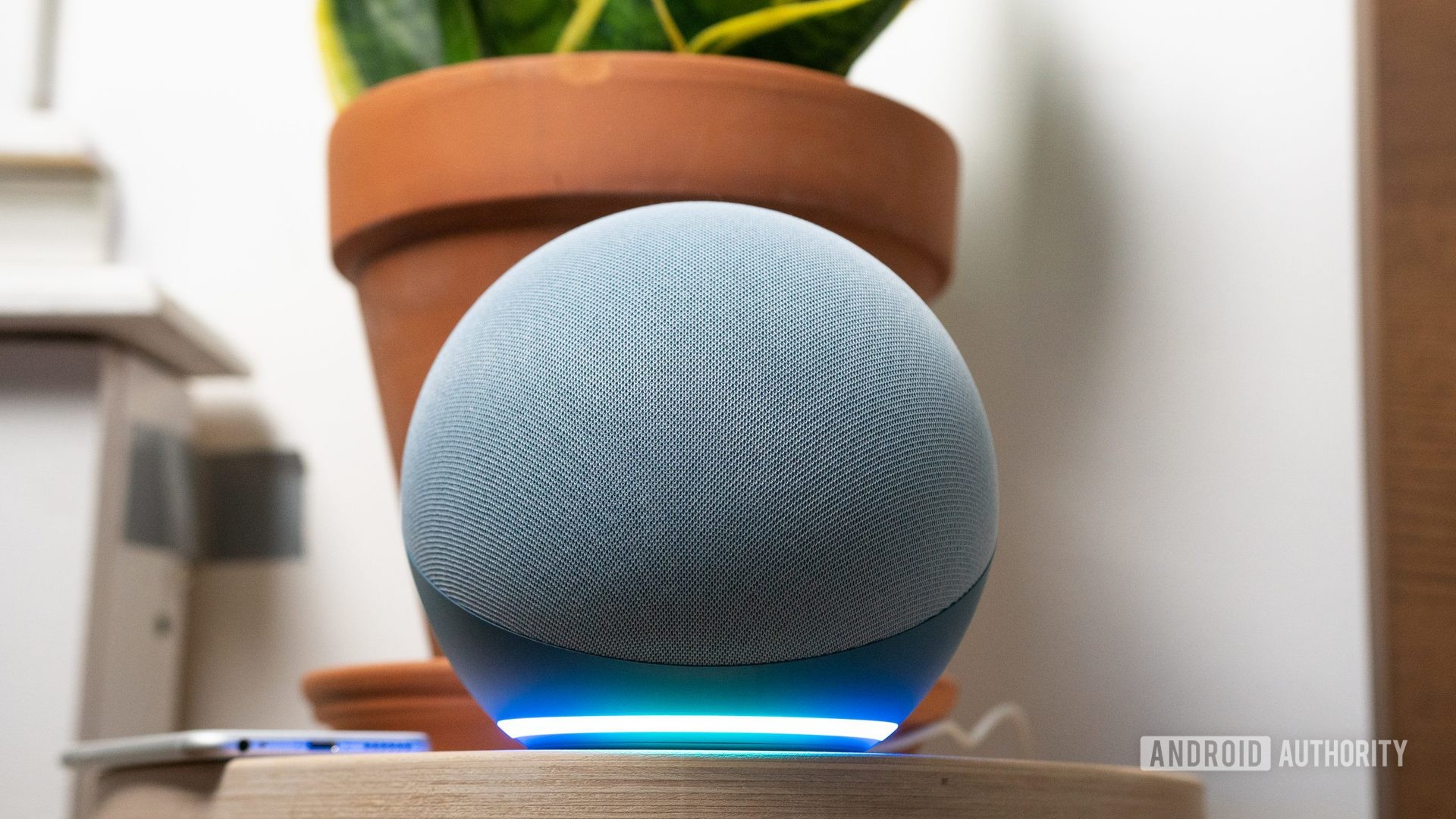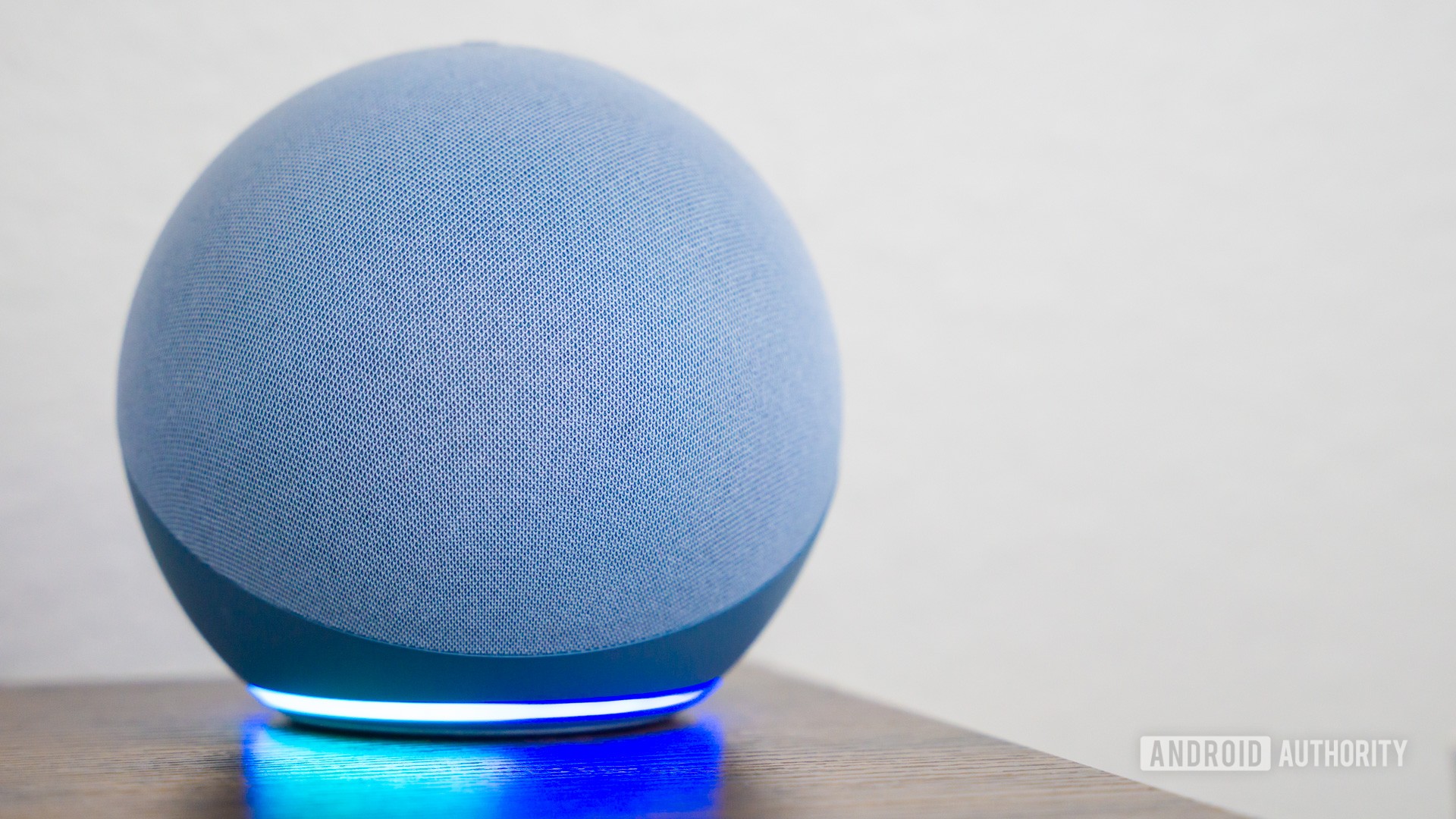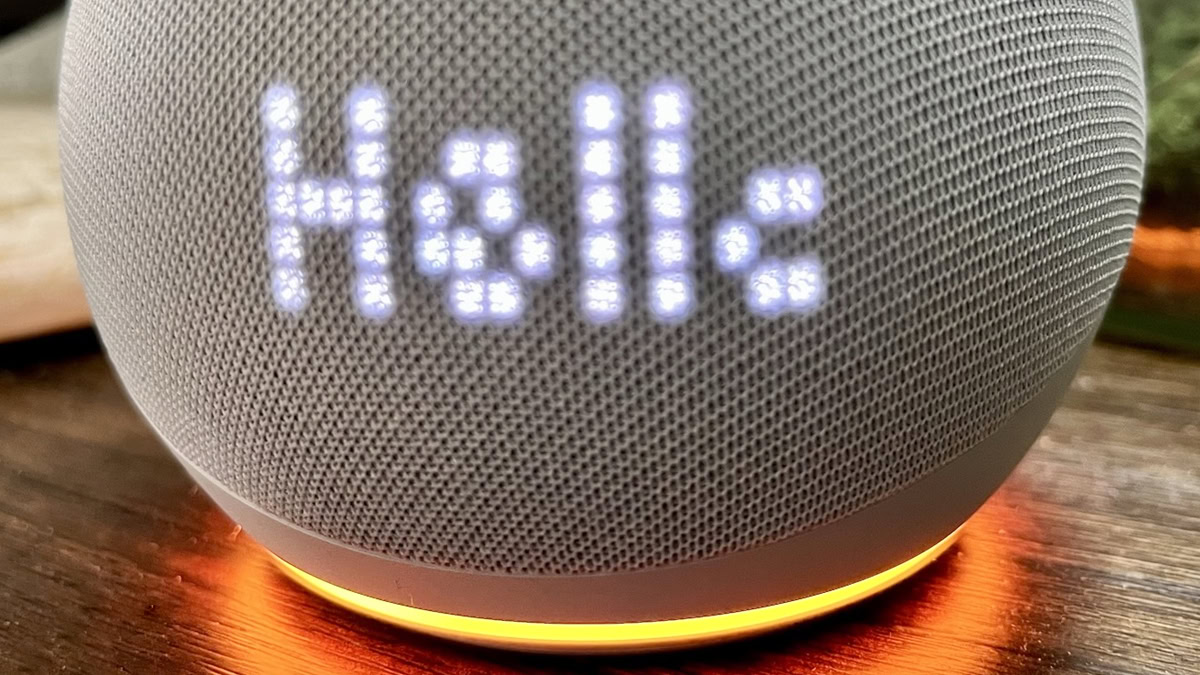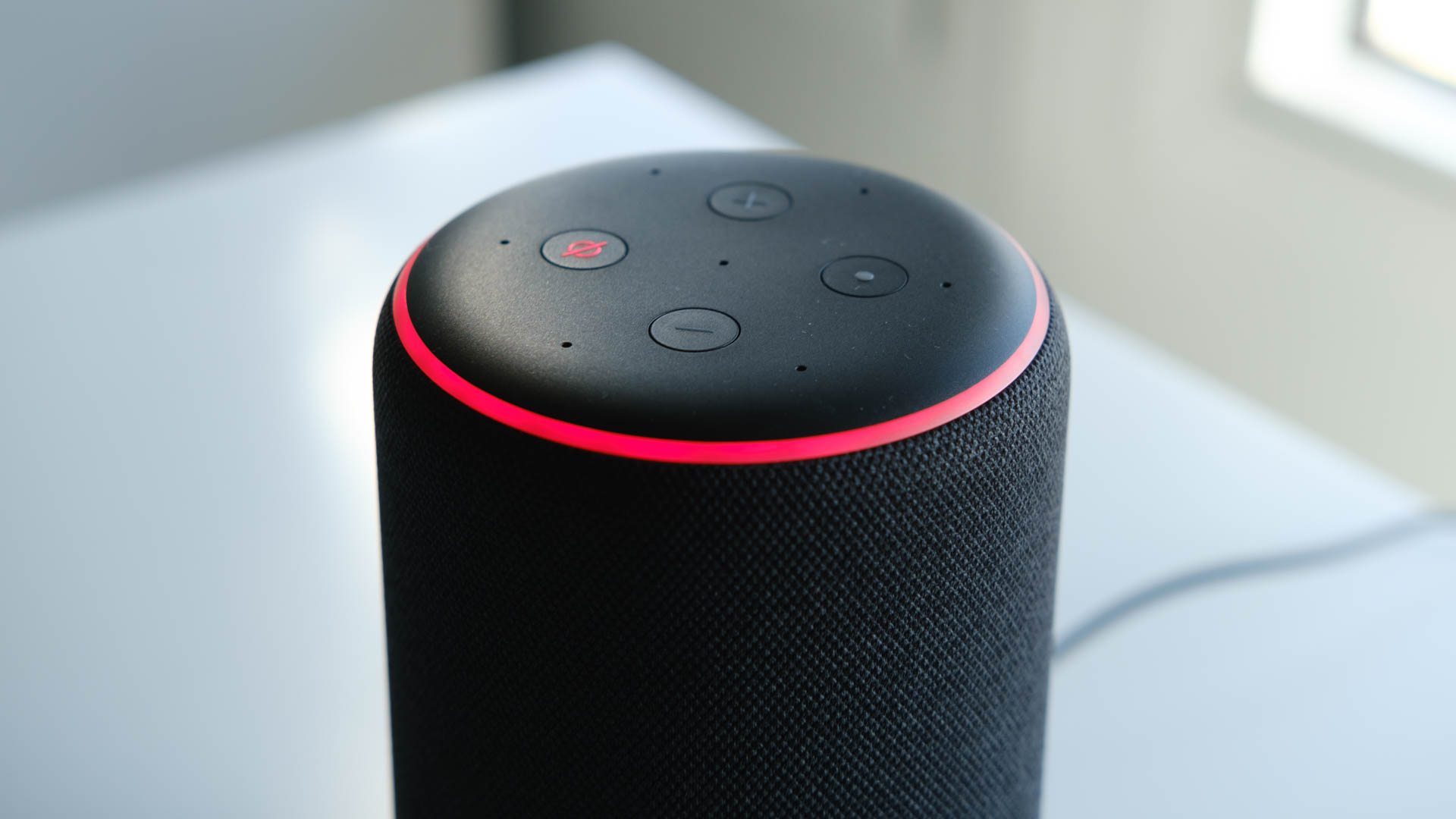Affiliate links on Android Authority may earn us a commission. Learn more.
What do Alexa's light colors mean?

What do Alexa’s light colors mean? The light is one of the most iconic elements of Amazon’s Alexa-based Echo speakers and smart displays. As you’re probably aware, it doesn’t exist just for style — it’s telling you something. Here’s what the different ring colors mean.
QUICK ANSWER
Amazon Alexa's light colors act as status indicators, and each color highlights a different issue or state. For instance, a blue ring indicates that your Alexa is active, either listening or responding to a command. In contrast, a red ring indicates an issue with your device's connection to the internet, but it could also mean that the camera and microphone are deactivated.
JUMP TO KEY QUESTIONS
What do Alexa’s light colors mean?

Most of the time, the only color you’ll see is blue. Solid blue indicates your Echo is listening for a voice command after hearing your wake word, normally “Alexa.” Depending on your device, a darker blue part will also point toward the direction the wake word came from. When the command is triggered, a blue glimmer lets you know it’s running. You’ll also see spinning blue whenever you plug a device back in, if only for a few seconds.
One of the first colors to appear on any new Echo device is orange. A spinning orange light generally means the speaker is in pairing mode, i.e. ready for setup. Once pairing is complete, however, the same light indicates that your speaker is trying to connect to the internet. That could be a bad sign if it lasts, since an Echo is normally connected 24/7.

White most frequently signals volume changes — the more of the ring that’s lit, the higher the volume. The only variation on this is a spinning pattern, showing that Alexa Guard is in Away mode. Guard is an optional security feature that listens for things like smoke alarms or breaking glass. It has to be set to Away mode to work, then disarmed when you return home.
Flashing yellow represents a waiting message, reminder, or notification. Short of turning on Do Not Disturb mode, the flashing will continue until you say something like “Alexa, what are my messages/reminders/notifications,” or “Alexa, delete my notifications.” Alternatively, you can check these items off in the Alexa app or an Echo Show’s touch interface.
Purple appears after voice commands when Do Not Disturb is on. That option blocks all alerts except for alarms, timers, and reminders. You may also see purple during setup if there are any Wi-Fi connectivity problems.
Red tends to have negative connotations. At best, solid red means that the microphones are muted, and/or that the camera is disabled in the case of an Echo Show. That may well be intentional — if you see flashing red, however, your Echo can’t connect to the internet. Often, your speaker will tell you as much if you try to ask for something.

Finally, green is linked to calling features. Pulsing green indicates an incoming call. A spinning light is used for an ongoing call or Alexa’s Drop In feature, allowing devices under the same Amazon Household (or consenting contacts) to have intercom-style conversations.
Can you turn off Alexa’s light ring?
The answer is “mostly.” This is done on a per-device basis using Do Not Disturb, which still allows alarms, timers, and reminders. Here’s how to toggle the mode manually using the Alexa app for Android, iPhone, or iPad.
How to enable Do Not Disturb on an Echo speaker:
- Open the Devices tab.
- Find and select your speaker.
- Tap the moon icon to flip Do Not Disturb on or off.
You can also schedule the mode to run daily. Use this if you want to keep a speaker quiet and dim while people are sleeping, but otherwise active. Yes, the exception for alarms and timers means your wake-up schedule will remain intact.
How to schedule Do Not Disturb on an Echo speaker:
- Open the Devices tab.
- Find and select your speaker.
- Tap the gear icon, then scroll down and select Do Not Disturb.
- Toggle on Scheduled and pick Start and End times.
- Optionally, you can use the Sync button to copy your schedule to other Alexa devices.